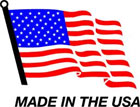| |
|
| |
|
 |
Supply
Chain by the Numbers |
| |
|
| |
- June 9 , 2011
|
| |
|
| |
|
| |
|
| |
Truckload Capacity Getting Real Tight; China's Shrinking Labor Cost Advantage; Railcar Idling Turns Other Direction; Nestle Sees Unprecedented Commodity Price Volatility |
| |
|
| |
| |
| |
|
|
16.4% |
Rate of monthly prices swings in key agricultural commodities during the 2006-2010 period, up from 12.4% in 2000-2005, according to Kevin Petrie, Nestlé's head of procurement, in comments this week. "We have a few years of being in this [commodity] boom cycle," Petrie added. Nestlé has set up commodity research teams to identify trends, while the company uses futures contracts and hedging to lessen its exposure to price swings.
|
| |
| |
|
| |
| |
| |
|

|
The percent of effective US manufacturing costs in the most labor competitive regions of the America (considering productivity differences) that Chinese labor costs will rise to by 2015, according to new research from Boston Consulting Group (before other supply chain costs). Those costs will also arise to 44% (in the Yangtze River Valley region of China) against average US labor costs across the entire US market, versus just 31% in 2010. In both cases this wuld dramatically shrink China's manufacturing cost advantage over the next four years.
|
| |
| |
| |
|
|
|
| |
 |
 |
| |
|
|
| |